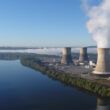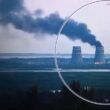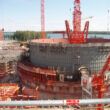Amid disaster, scientific consensus and reliable data
By Augustin Simo, May 12, 2016
It's no great surprise that estimates of Chernobyl's fatalities differ widely. As my roundtable colleague Sonja Schmid noted earlier in Round Two, the World Health Organization reported in 2005 that Chernobyl fatalities would approach 4,000. The next year, Greenpeace estimated that nearly 100,000 fatal cancers would result from the disaster. These numbers are far apart, but calculating radiological risk is always problematic. Where low doses of radiation are concerned, uncertainties are very large. Likewise for risks to specific population groups. Assessment approaches, meanwhile, vary from one organization to another. The correct death toll from Chernobyl probably won't be decided for a long time, if ever. The death toll surrounding Fukushima is an open question too. Better statistical evidence is needed to support projected death tolls stemming from nuclear disasters—there has been a lack of quantitative studies that can validate estimated death totals in exposed populations to which certain risk factors are applied.
Unfortunately, lack of consensus about estimating casualties undermines public trust in nuclear power. Indeed, if the nuclear scientific community adopted a uniform approach to estimating disaster-related casualties, public unease with nuclear power might become more manageable. Ideally, the scientific community would reach consensus and, all at once, begin implementing that new consensus. Such an approach would likely lead to greater acceptance of nuclear power than is engendered by the current diversity of scientific opinion.
In any event, scientific studies indicate that the psychological harm caused by a nuclear accident may be more damaging than radiation effects are. Schmid has noted that stress associated with evacuation amounts to a legitimate form of trauma; so does simple fear. For any disaster preparedness and response system, knowing how to manage these psychological effects presents a serious challenge.
First priorities. Meanwhile, Schmid writes that disaster preparedness and response "are in large part technical," but not "just technical." She is correct, of course. But in any disaster, the technical aspects of preparedness and response must be first priorities. From the moment an incident begins, data must be gathered that can help define the scope of the emergency and provide guidance for actions by first responders. Continuous, real-time monitoring must be conducted to assist in assessing the incident's immediate consequences and its potential impacts on people and the environment. And reliable data must underpin any public declaration by officials or experts. Officials must, as Manpreet Sethi writes, "have quick access to informed scientific opinion and expert judgment so they can make good decisions in extreme time pressure."
But data, and the interpretation of data, can easily become controversial—particularly when local officials enter the picture. For example, beginning very early in the Fukushima disaster, Japan's Nuclear Safety Technology Center "began releasing forecasts of the diffusion of radioactive materials (plume forecasts)." But Fukushima Prefecture decided that the information provided wasn't up to date enough and never officially announced it. Disagreements of this sort can delay necessary action.
Further risk of delayed action lies in the secrecy inherent in nuclear establishments. An excessive desire to preserve secrecy can delay interaction with foreign experts and institutions. This tendency must be resisted because, during an emergency, it's absolutely crucial for the international expert community to share views and approaches in a timely way.
Topics: Nuclear Energy
Share: [addthis tool="addthis_inline_share_toolbox"]














